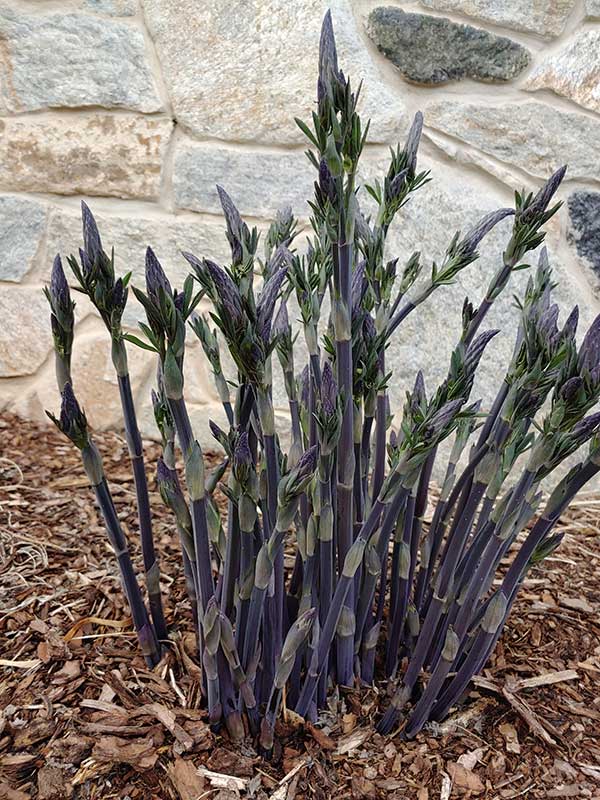There are so many plants and so little time to try them all. Most gardeners do their best to squeeze those “found” interesting plants into the tiniest open garden crevice. How about a few more to wedge in between the already beloved ones? It will be easy to say yes to at least one of these “A” plants.
Agastache, Licorice Mint, has many flowering species within the genus and all are fragrant. The cold hardiness zones are as varied as the plants, so check plant tags carefully to ensure desired perennial or annual for your area. Agastache of any type or zone should be used more often in the perennial bed and in the vegetable garden. They provide food for pollinators and their scent helps to mask plant locations from marauding pests. These tough plants need to live in well-drained soil to thrive. Standing water will kill them quickly. Provide full sun for best flowers but if given partial sun, they will survive. Agastache is an all-around great container and companion plant. As a bonus, deer leave it alone.
Amsonia “Storm Cloud”, or Bluestar, is a lovely, zone 4 – 9 hardy, native selection that starts to wow as soon as the dark blue stems rise out of the ground. Resembling asparagus as it emerges in spring, Amsonia quickly unfurls dark green leaves topped with clear blue, star-shaped flowers. Overall, the vase-like plant shape remains upright throughout the growing season. The stems continue to grow to about 30” in height once blooming has ceased. In fall, Amsonia leaves turns a pleasant yellow hue lasting until defoliation. Plant these with mature size in mind as they will overrun a stingy space allotment. Place in full sun to partial shade for best flowering. Provide consistent water until established, after which, Amsonia is quite tolerant of neglect. It will grow in almost type of soil with a neutral pH. Also, deer do not appear to feed on Amsonia.
Astilbe “Purple Candles” brings 42” tall, bright, reddish-purple flower color to a full sun to part shade summer garden. It can be successfully grown in hardiness zones 4 – 9. Astilbe is tolerant of drier soils once established, but will produce better blooms in soils with a bit of consistent moisture. Mounding, bright green, somewhat coarse foliage will grow to about two feet, staying firm and glossy throughout the growing season. Deer are not particularly fond of Astilbes.
Andropogon “Red October” and “Holy Smoke”, or Big Bluestem, are two lovely results of the great breeding work from Intrinsic Perennials in Illinois. Both are upright with good form and movement. During the spring and summer Red October shows pretty, dark green stems with reddish tones. After a frost, the color deepens to burgundy and glows. Holy Smoke casts an upright, silvery light throughout the season, showing red highlights as it ages. Big Bluestem are majestic grasses that need space in full sun to develop and linger. Choose your location with care for the mature size of four to six feet in height and two feet in width. Andropogon will grow in hardiness zones 3 – 9 and will tolerate dry conditions once fully established. They are also deer resistant.
Athyrium “Godzilla”, or Japanese Painted Fern, is a monster painted fern hardy in zones 3 – 8. Although it takes a few years to mature, expect it to reach three feet tall and six feet in width. Not your average fern. Like all painted ferns, Godzilla appreciates well-drained, loamy soil with adequate moisture. Once established, it will tolerate a bit of dryness when planted in shade. Avoid any site that will expose the fern to hot afternoon sun to avoid losing the pretty silver, green, and maroon coloring. Properly composting the area, well prior to planting, will provide the nutrients necessary for Godzilla to thrive. Also, deer do not bother Athyrium.
